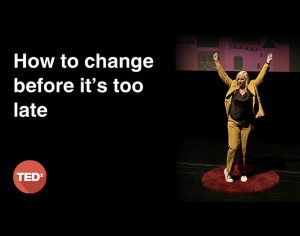Two weeks. That’s the legal entitlement of a father’s paternity leave, depending on their working situation, which arguably isn’t a great deal of time to bond with their family’s new addition. By comparison, mothers can take up to 52 weeks of maternity leave from work. But as shared parental leave is becoming more sought after by employees, employers better brush up their knowledge about the legalities, risks and benefits of letting their staff go home to care for their tiny tots.
The rise of shared parental leave came about in an apparent attempt to bridge the gap four years ago when the lawful option to take it came into action as of April 5 2015. Effectively, it allows new parents to share their time off of work, with up to 50 weeks of leave and 37 weeks of those paid. But in February 2018 as part of the government’s Share the Joy campaign to spread shared parental leave awareness, it was detailed that 285,000 couples qualify each year but as little as 2% take it up.
Part of that reason is perhaps linked to the ongoing issue of the gender pay gap. If there’s a large gulf in earnings between the mother and father, the extra leave won’t be possible financially, given that statutory pay is £139.58 a week. There are other circumstances at play that can also act as a barrier. In the midst of promoting Share The Joy on the radio, then-small business minister Andrew Griffiths let slip that despite possessing the title of expectant dad, he couldn’t take the time off. “Unfortunately, as a minister, I’m not allowed to take shared parental leave,” he told gobsmacked presenter Emma Barnett.
But one man who did indeed take paternity leave as well as shared parental leave five months down the line is Simon Hall, director in the corporate finance team at BDO, the business advisory firm. Although, despite the nature of the company he works for, shared parental leave was still something of a revelation to him too. “In all honesty, at the outset I knew the two weeks’ paternity leave was available but I wasn’t aware that shared parental leave even existed,” he admits. “It’s not something friends or colleagues had talked much about.”
Hall only learnt about the opportunity it presented when he sat down with BDO’s HR partner to discuss the options that would be best for his family. And having embraced shared parental leave and gotten more time in with daughter Jessica, it’s really opened his eyes. “Having really benefitted from shared parental leave, I’ve become quite passionate about it,” says Hall, adding that the fact so few eligible parents take it up “is a massive shame.”
He’s well aware of the challenges different families will face though and concedes it won’t always be feasible for all staff. “I think as well as people worrying about the perception, one of the main issues is the number of complexities that surround shared parental leave, particularly if you and your partner work for different employers,” he reasons. “For me it was less complex as my wife runs her own business but I would imagine for some it would be quite challenging.”
The point Hall raises about the perception is a significant one. Alarmingly, 44% of dads revealed they’ve been met with workplace discrimination after returning from either paternity or shared parental leave, according to communications software firm PowWowNow. 35% of fathers said that pursuing parental leave was detrimental to their career with 20% of them receiving a demotion and 17% experiencing loss of their job. As it stands, just one in ten dads have used shared parental leave since 2015, the study found.
Of course, leave should be something to be embraced not feared and that’s why Hall is driving increased the conversation at work. “A few of us in the team have posted articles on our BDO internal communication channels to try and increase awareness of shared parental leave in the firm and I now have people asking me about it all the time,” he says. “I know of a number of BDO employees who have chosen to take shared parental leave but there could most definitely be a lot more.”
The question is, should it be down to the staff to dig around for information on shared parental leave or should employers be doing more to support their workers? “There’s been quite a limited take up by new parents,” states Simon Whitehead, managing partner of HRC Law, the legal firm. “Commentators blame the fact that statutory shared parental pay isn’t enough to live off, though some companies do choose to offer enhanced shared parental leave payments but these are still the exception rather than the rule.” He added another problem is that fathers have “no real right to leave” as shared parental leave can only arise if the mother gives up some of her maternity leave.
Where pay is concerned though, Whitehead refers to a couple of scenarios that had legal implications. “Two cases recently before the Court of Appeal looked at whether it was direct or indirect sex discrimination or breach of equal pay requirements, to offer different rates of pay for mothers on maternity leave and fathers on shared parental leave,” he says. He adds “the short answer was no” but the dads involved may yet take the fight to the Supreme Court.
“The fact that the employers had chosen to offer enhanced rates for maternity pay, but not for shared parental leave, highlights the disparity,” reasons Whitehead. “This doubtless acts as an economic disincentive for dads keen to share or take over early years’ childcare from their partners.”
Employers should recognise there are clear benefits to being more welcoming of shared parental leave for staff satisfaction and also for child development, even if that means enhanced pay. The resultant effect it had for Hall is clear. “For me personally, having a few weeks of paternity leave when Jessica was a newborn just didn’t feel enough, hence I decided to take another six-week block of shared parental leave when she was five months old,” he explains.
The additional time off allowed Hall to be there for major milestones, like her first words, introducing her to solid foods and visiting family abroad. “This flexibility made a huge difference, as it meant I was able to support my wife at a point when our daughter was becoming more active – and demanding,” Hall details.
Hall’s mentality aligns with a recent report from online fatherhood community Daddilife and professional services firm Deloitte, which revealed how much more involved modern dads are than those of yesteryear. Indeed, 58% of young dads are now involved in day-to-day parenting and 63% have sought revised working hours.
With marketing agency MediaCom one such business that champions shared parental leave, Nancy Lengthorn, managing partner and head of diversity, inclusion and future talent, concludes: “It’s a fantastic chance to bond, stabilise the family and create a healthy platform from which to progress from. But crucially, it offers us all the chance to address gender imbalance in the workplace. Shared parental leave ultimately helps to ensure that parenting isn’t solely the responsibility of the working woman and will help to level the playing field when it comes to how men and women are viewed in the workplace and the gender pay gap that can come with that disparity.”
Share via:


















































